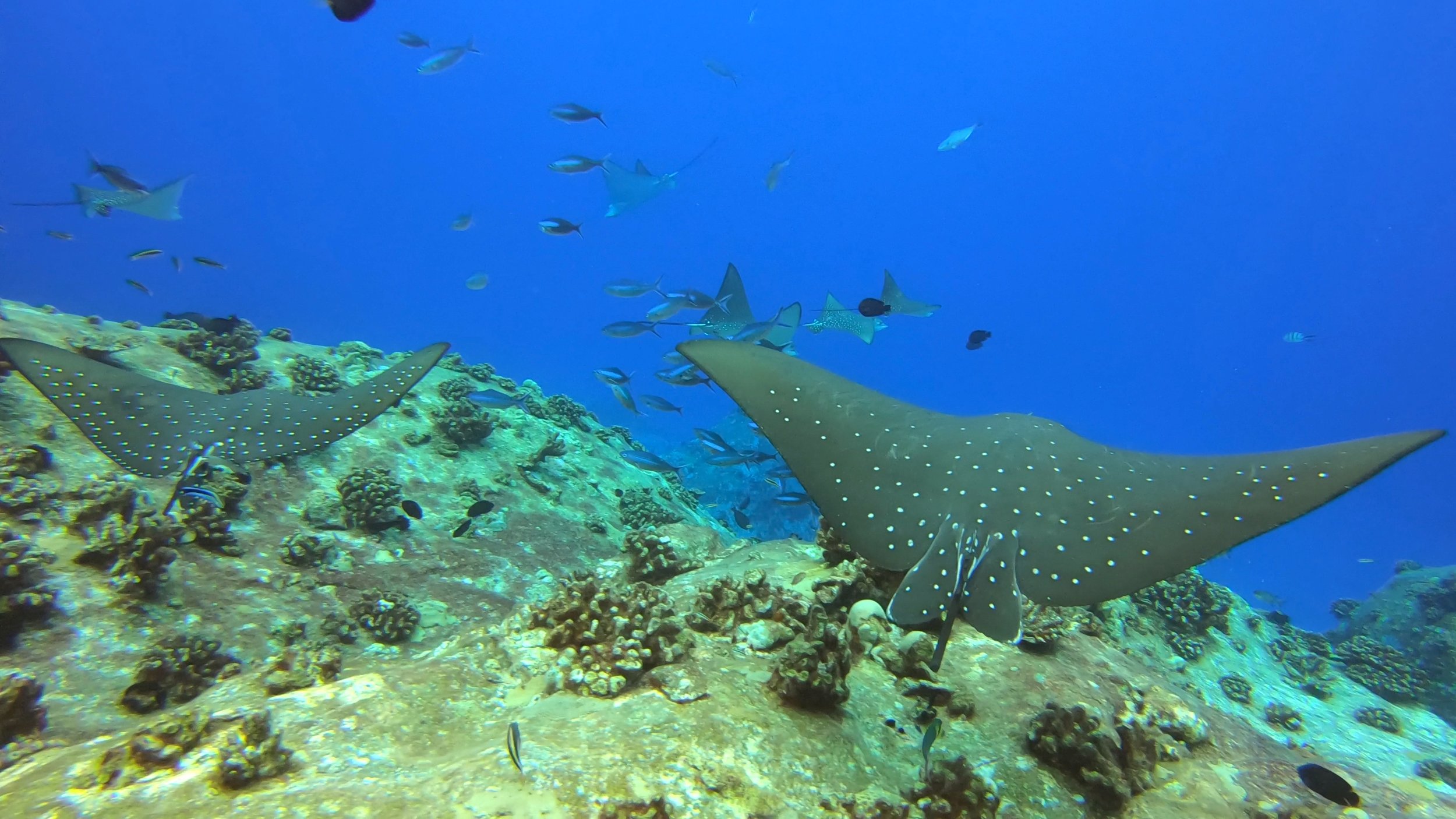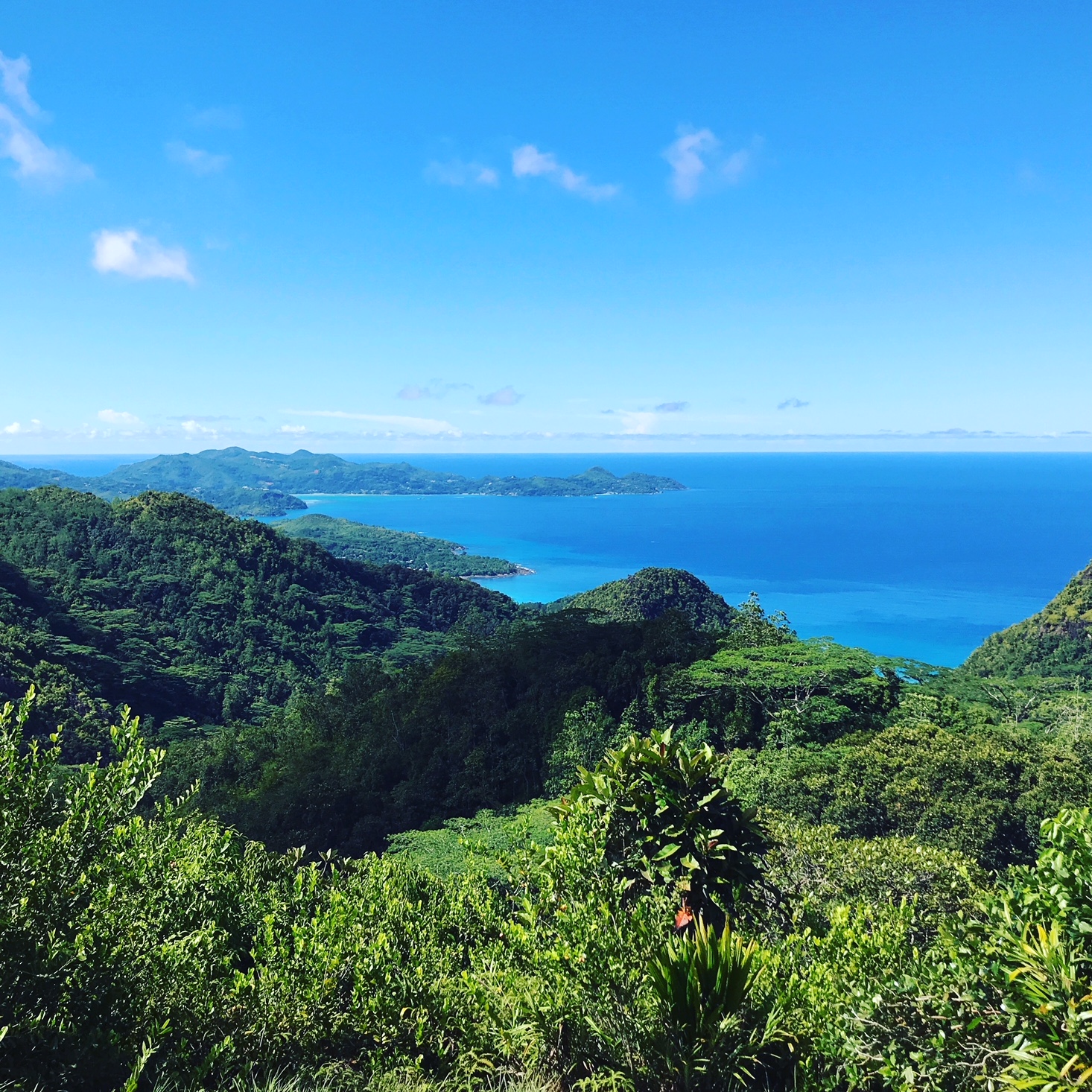Cutting Edge Conservation Finance in the Seychelles
As I travel the world to write stories about climate change, coral reefs and efforts to protect marine life, I have become increasingly enthusiastic about solutions that adapt modern finance and investment strategies for conservation. Nonprofit and governments don't have the financial capacity to scale ocean conservation fast enough to overcome the challenges posed by global climate change, over-fishing and unsustainable development. The private sector must be an enthusiastic part of the solution. NatureVest, the impact investment team within The Nature Conservancy (TNC), is spearheading a number of initiatives to retool traditional finance to benefit marine ecosystems and help local communities adapt to climate change.
One innovative example is the Debt-for-Nature Swap (DFNS) that NatureVest spearheaded in the Seychelles, an island nation of 115 granitic and coral islands in the western Island Ocean. TNC has successfully completed a few of these debt-for-nature agreements to conserve rainforests in Latin America, but the Seychelles deal is first focused on marine habitat. This past February, the Seychelles government announced a major outcome of the deal: the designation of the second largest Marine Protected Area (MPA) in the Indian Ocean.
My idol, Dr. Sylvia Earle, President and Chairman of Mission Blue, and myself at the Economist World Ocean Summit in March.
Martin Callow, Chief Executive Officer of the Seychelles Conservation & Climate Adaption Trust (SeyCCAT).
I was fortunate to be able to meet with Martin Callow, Chief Executive Officer of the Seychelles Conservation and Climate Adaption Trust (SeyCCAT), the conservation trust created to independently manage the financial flows from the debt for nature swap for the nation's conservation benefit. While researching through the attendance list at the Economist World Ocean Summit in Playa del Carmen, Mexico last March, I discovered that Mr. Callow was also attending, so I made of point of seeking him out. After a few unsuccessful attempts to introduce myself to people resembling Mr. Callow's photo, we connected at the closing cocktail gathering and met in Victoria, the Seychelles capital, one month later.
After a decade of service with the Wildlife Conservation Society in the UK, Fiji and Myanmar, Martin Callow was hired as the founding CEO of SeyCCAT in 2017. He was enthusiastic about his new role and happy to be living in the Seychelles where he had done his first field research as a marine scientist.
“It is particularly rewarding to start seeing innovative finance routed towards helping solve crucial ocean issues and towards developing new “blue economy” business models here in Seychelles,” said Martin. “We’re starting to see new organizations and partnerships drawn to the field, a key goal of ours.”
The Seychelles is an island nation of 215,000 people and 115 islands in the western Indian Ocean. (c) WorldAtlas
As Martin explained, the Nature Conservancy was looking for countries that were dedicated to marine conservation but lacked the funding to pursue their conservation goals. The Seychelles government had made major commitments at the 2012 Paris Climate Agreement, but was burdened with extensive debt and credit-rating downgrades after the last great recession, so it lacked have the money or financing capacity to work toward its conservation goals. TNC recognized the opportunity, approached the Seychelles government, and managed the whole process: raised money from donors, found creditors willing to forego financial interest for conservation benefit, designed the financing mechanisms, and facilitated the spatial planning effort to designate the MPAs.
Under the terms of the 2016 deal, the Seychelles government agreed to protect one third of its Exclusive Economic Zone (EEZ) - twenty to two hundred miles offshore - as marine protected areas in exchange for its Paris Club creditors restructuring $22 million of its sovereign debt. The payments from the debt restructuring are redirected to the SeyCCAT conservation trust to independently allocate the funds for conservation and climate adaption projects. As a part of this agreement, in February the Seychelles government designated 81,000 square miles of marine habitat as marine protected areas, including part of Mission Blue's Outer Seychelles Hope Spot, highlighted for its ecological importance. The Seychelles government is currently engaged in a six-year long, multi-stakeholder spatial planning process, facilitated by TNC, that will double the size of the MPA network. Half of the MPAs will be no-take marine reserves, which prohibit fishing, to allow fish to replenish and restock outlying areas.
In addition to the debt-for-nature swap deal, the Seychelles government is issuing the first ever Blue Bond – a debt instrument specifically created to fund marine conservation and climate adaption projects. As in the DFNS, SeyCCATT will be managing the proceeds of the bond sale. The DFNS and bond assets will only be routed to projects that can demonstrate alignment with robust environmental and social principles.
“SeyCCAT is excited to be co-managing proceeds from the Seychelles Blue Bond,” said Martin. “Working with the World Bank's Third South West Indian Ocean Fisheries Governance and Shared Growth (SWIOFish3) project, and in partnership with the Development Bank of Seychelles, we will be co-managing US$15M to provide blended finance in the form of grants and concessionary loans.”
SeyCCAT is focused on financing the Seychelles’ transition from open to better-controlled fisheries management, which should benefit tourism and fishing, Seychelles' two biggest economic drivers.
“SeyCCAT is excited to be co-managing proceeds from the Seychelles Blue Bond,” said Martin. “Working with the World Bank's Third South West Indian Ocean Fisheries Governance and Shared Growth (SWIOFish3) project, and in partnership with the Development Bank of Seychelles, we will be co-managing US$15M to provide blended finance in the form of grants and concessionary loans.”
SeyCCAT is focused on financing the Seychelles’ transition from open to better-controlled fisheries management, which should benefit tourism and fishing, Seychelles' two biggest economic drivers. The additional $15 million generated from the Blue Bond sale will allow it to expand its Blue Grants by 179% to $780,000 per year and add $12 million to the Blue Investment Fund. SeyCCAT recently announced its first round of Blue Grant project partnerships.
“It is our hope that this unique financial instrument and partnership can be replicated elsewhere to support fisheries transition to sustainable practices,” said Martin
With these two agreements, Martin is overseeing a cutting edge conservation program using international finance to invest in ecosystem protection. “Seychelles has taken on a pioneering role when it comes to developing innovative financing mechanisms and we are focused on demonstrating success in Seychelles,” said Martin, “so the model can be taken on by other coastal and island nations."
The success of the blue bond issuance comes at a time when the entire green bond market has been growing by over 90% per year since 2016. Last year, the green bond market – fixed income financing for projects such as renewable energy, pollution prevention and conservation – was over $155 billion. While this is a drop in the bucket of the $13 trillion international bond market, its explosive growth coupled with the fact that the financial industry is the laggard, not investors, is a good sign for future growth. Now that the first blue bond has been issued, I am excited for its potential as a financial instrument to help fund marine protection and restoration in island nations around the world.
The more I study large-scale marine conservation, the more I am convinced that in order to scale habitat protection, we need to encourage the private sector to invest in ecosystem protection, even if it does so for its own reasons. While it is vitally important to continue to hold the companies accountable to environmental laws based on good science, we also need to proactively collaborate with the business community to seek solutions that are a win-win for their bottom line and the environment. Financial strategies like debt-for-nature swaps and blue bonds are powerful solutions for rewarding countries and companies whose activities help to protect marine ecosystems and fight climate change. There are many Large Ocean Developing States (LODS) like the Seychelles that are rich in marine resources and committed to conservation, but cash-poor and overburdened with sovereign debt after the last global recession. In addition, these island nations are often the most threatened by the negative effects of climate change, including rising sea levels and severe storms. We need to find ways to expand large-scale impact investment opportunities in emerging market nations to help LODS to reach their conservation goals and offset the negative effects of global climate change. Hopefully success stories like those being pioneered by the Nature Conservancy in the Seychelles can be replicated across the globe.
View of the ocean, Mahe Island, Seychelles
Read more from Epic Ocean Adventure.........
(c) Unless otherwise attributed, all photos were taken by Frederick Smith at Epic Ocean Adventure.








